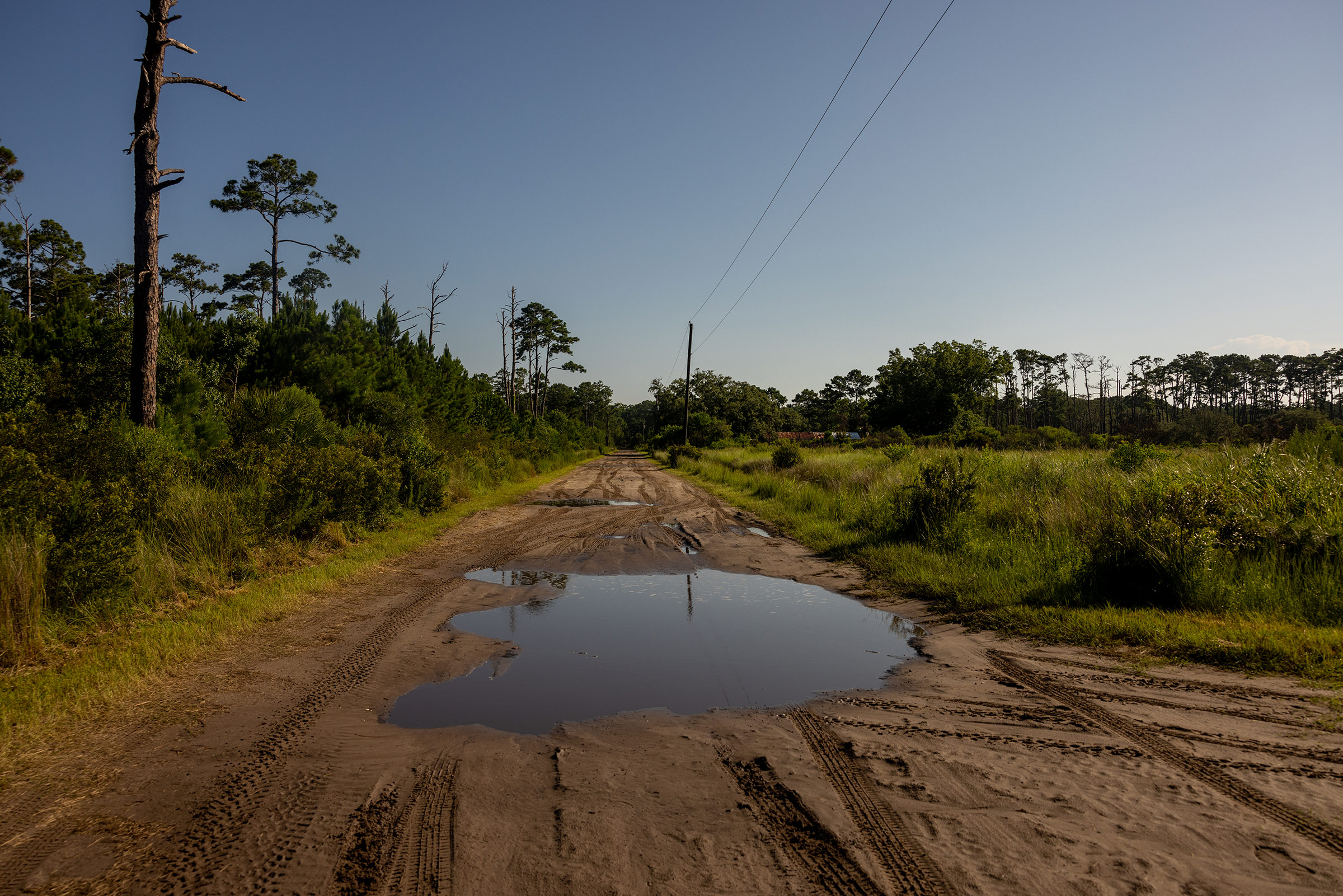
Reginald Hall rises early. Then he pulls on his running shoes, mounts his bike, and starts out from the house where he grew up.
Here on Sapelo Island, an otherworldly landmass off the coast of Georgia, the sandy brown dirt roads crunch under foot or wheel. Oaks boast trunks wide as compact cars. Pines seem best measured by their proximity to the sky. Celestial in their own way are the waxy-leaved magnolias, fragrant when their generous, bowl-shaped white flowers bloom. Green things so narrow most roads that drivers must pull over for a vehicle to pass in the other direction. That system, like so much else here, is maintained without official enforcement. Dangling bunches of silvery brown Spanish moss, a rootless plant with the rare ability to draw all it needs from the air, lend Sapelo the feel of a Southern secret garden—a space defined by a natural beauty that for some is enough to obscure neglect or even brutality.
But nothing compares to the vista at the end of Hall’s morning journey. On Sapelo’s seven-mile stretch of white-sand Atlantic coastline, Hall, 56, likes to stand awhile in silence. At the edge of America, between the waves and the grass-studded dunes, Hall turns his hands and face toward the sun. It is, Hall explains, a singular source of restorative energy. The sun helped sustain his ancestors, enslaved Africans and progenitors of the population today known as the Gullah Geechee, who maintained a unique culture after having been brought to this area. Nearly 1,000 were living on Sapelo just after the turn of the 20th century. Today, Sapelo is believed to be home to one of the last intact Gullah Geechee island communities in the U.S., comprising what Hall says is a mere 26 people.
“What could force people off a beautiful plot of land, an island? Lack of employment and lack of services, that’s what forced them off,” Hall says of the ground in which the ancestors he never knew, along with his grandparents and father, now rest in peace.
On Sapelo, where more than 90% of residents are Black, according to 2017 testimony offered by a Georgia official during a federal lawsuit, there are poisonous snakes, but there are no ambulances. When anyone on the island requires medical evacuation by helicopter, others must form a makeshift landing site by positioning their vehicles in a circle, headlights on. (The precise number of full-time residents is difficult to calculate, as the island attracts many vacationers and does not constitute its own census tract.) There is no person trained to fight fires—and no working equipment for doing so, even if someone knew how. Residents must haul their own trash, and the disposal site is irregularly maintained. On one day in July, after less than an inch of rain overnight, potholes filled with water deep enough that I watched not one, but two, young alligators crawl out.
Meanwhile, in the mainland portions of the county that includes Sapelo—McIntosh County, Georgia—the roads in its overwhelmingly white areas are paved or at least smoothly packed. Ditch and drainage systems are regularly cleared of debris. Residents can call for firefighters or ambulances to come directly to their doors. Garbage is picked up at their curbs. In other words, the population can count on the kinds of public services most people assume will be provided by the government in a country with an advanced economy and standard of living.

To Hall and many other Gullah Geechee islanders, this difference is not just a result of rural living. Sapelo, Hall argues, has been subject to targeted neglect, which he sees as aimed at driving off Black locals as an influx of mostly white newcomers acquire property on the island. That activity has caused sudden property-tax increases on the island; from 2011 to 2012, tax assessments for some Gullah Geechee residents in older homes rose as much as 3,000%. (Hall and his relatives challenged the hike in about 100 individual cases in state court. They won refunds and a temporary reprieve in a group settlement reached in 2015.)
More from TIME
In 2015, Hall and dozens of his kinfolk with connections to the island filed a federal civil rights suit alleging that, despite residents’ paying property taxes and other government fees just like mainlanders, McIntosh County and the state of Georgia had systematically starved the island of resources by refusing to provide essential services that are standard in other—and, crucially, whiter—parts of the county. On Sapelo, they charged, the absence of core services has made it nearly impossible for the descendants of the historically important population to thrive. The state settled its portion of the federal case in 2020, but the remaining case against McIntosh County had been set to go to trial at the end of July. Then, days before proceedings were to begin, McIntosh County officials offered a settlement.
Read more: The U.S. Is Increasingly Diverse, So Why Is Segregation Getting Worse?
While the specifics of what’s happening in McIntosh County may be unique, the patterns are not. Public services are provided in unequal ways all over the country. And in city after city, town after town, county after county, it’s Black, Latino, and Native American families who so often receive less than their fair share of services. According to one 2019 analysis of federal data about a major low-income housing program, people living in majority-white neighborhoods with units created by the program were 1.5 times less likely to dwell in conditions that make them vulnerable to contagious disease. And of the more than 2.2 million people in the U.S. who live without access to any kind of indoor plumbing, Native Americans are nearly 20 times as likely as white Americans to rank among them, according to one 2019 report. Studies have shown that in cities in Washington and Texas, Michigan and Maryland, everything from streetlights to water-service fines are uneven in the same ways. And, experts say, outsiders who do notice the situation are all too likely to ask what’s wrong with its victims, rather than what’s wrong with the officials who fail to fix it.
Sapelo’s settlement terms were made official on Aug. 5 when all the case’s living Sapelo plaintiffs and county officials signed an agreement that U.S. District Court Judge R. Stan Baker is expected to approve Aug. 8. That moment will come a decade after Colfax first stepped foot on Sapelo. For the countless others who might see themselves in Sapelo’s story, this conclusion to a seven-year legal battle—as part of a centuries-long story—may offer a blueprint for how such a fight can be fought. For those who see a neighborhood or community in distress and don’t question what public services are provided, it’s also a warning.
“It’s government. It can be you next,” Hall says of any who might see limited public services as the problem of the people on the receiving end of such treatment. “It could be you tomorrow.”
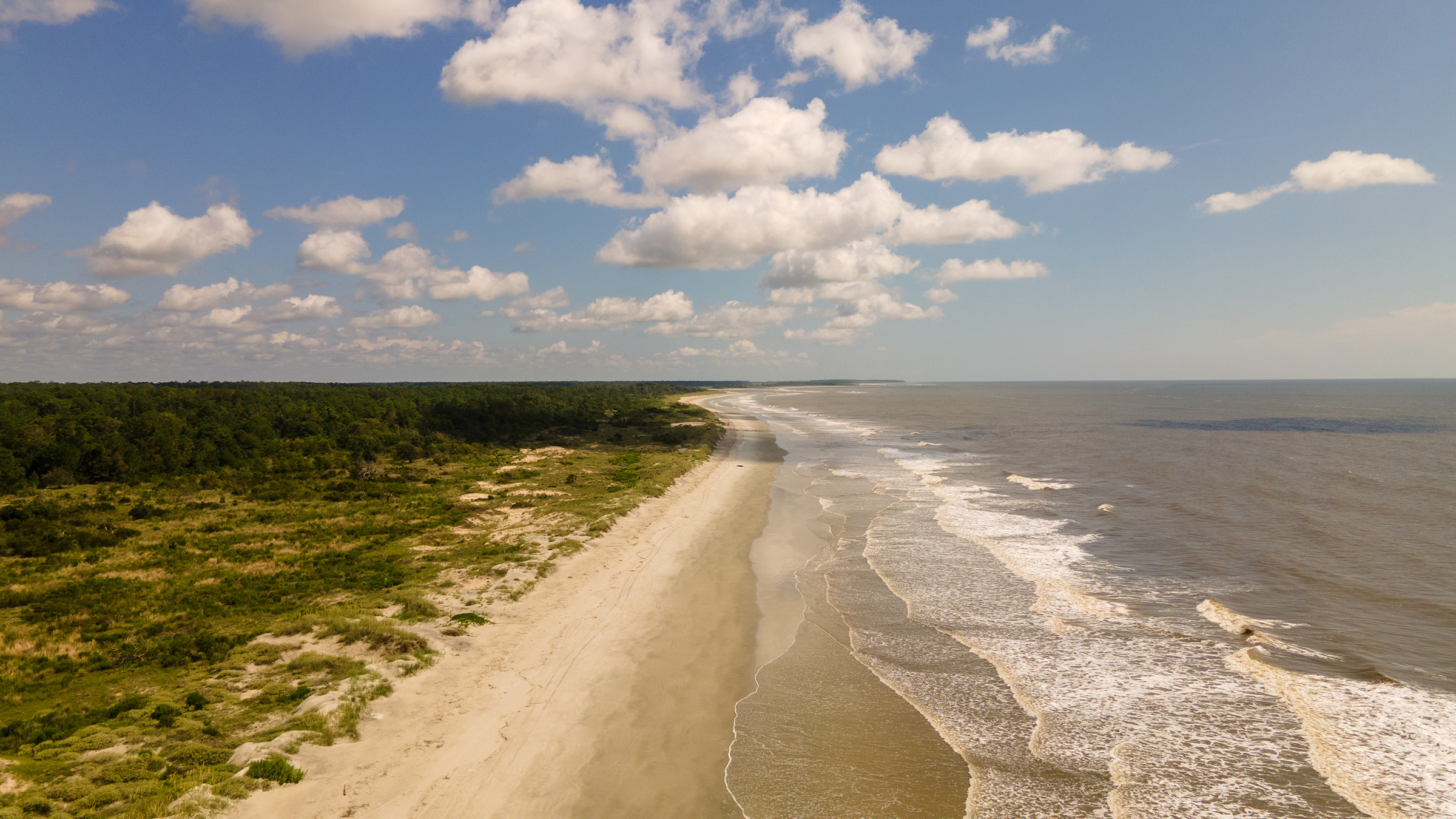
They say the Gullah Geechee are people of the water.
It was the water that brought them here, from the shores of West Africa, in the hulls of fetid slave ships, to make the U.S. rich. It was the water that made their white enslavers dependent on the men and women who brought with them knowledge of the best ways to farm this marshy land, to build homes that caught a cool breeze, to keep mosquitoes at bay. And it was the relative isolation created by water that helped foster conditions where the Gullah Geechee could sustain more West African language, foodways, and traditions than other enslaved populations.
On Sapelo, an island roughly the size of Manhattan, there are remnants of an advanced public-works system erected by the Native American tribes that occupied the island as long ago as 4080 B.C.E. Graves on the island indicate it was in the late 1700s that enslaved people of African origin began forced labor here. The white men whose fields they went on to forcibly work included Thomas Spalding, who represented Georgia in the U.S. Congress as a pro-Union Democrat and eventually bought up most of the island. Among the enslaved people said to have been most valued by Spalding was Bilali Muhammad, one of Hall’s forebears. Family lore has it that Muhammad is a shared ancestor of most of the Gullah Geechee who have called Sapelo home. His list of descendants also includes Ahmaud Arbery.
Read more: What Ahmaud Arbery’s Death Has Meant for the Place Where He Lived
The Civil War began just over a decade after Spalding’s death. Georgia’s Sea Islands, which include Sapelo, would play a unique role in the conflict’s story: when 1865’s Field Order 15 offered an economic jump start to Black Americans who had been enslaved—the promise known widely today as 40 acres and a mule— the Sea Islands were set aside for Black landowners. The concept was revolutionary. Historian Eric Foner, in his book Reconstruction: America’s Unfinished Revolution 1863-1877, puts the number of freedmen and women who by June 1865 had taken up residence in the territory covered by the order at an estimated 40,000. But soon after Abraham Lincoln’s assassination, President Andrew Johnson revoked the field order and directed unsold land returned or made available to new white buyers, says Stan Deaton, senior historian at the Georiga Historical Society. On some of the Sea Islands, federal troops were sent to ensure the land went back into white hands, he says.
The American history of efforts to push Black people off of land did not stop there. In fact, the civil rights era of the 1960s saw much of that movement, says historian Pete Daniel, author of Dispossession: Discrimination Against African American Farmers in the Age of Civil Rights and The Shadow of Slavery: Peonage in the South, 1901-1969. “It was almost as if people were blind to what was going on or more likely they didn’t care what was happening to African Americans. So the white people in rural areas were just free to do all kinds of mischief and take over land,” he says.
Read more: How the Civil War Changed the Way Americans Thought About Economic Inequality
Early one morning at the beginning of July, I take the 30-minute ferry ride from the mainland through Hudson Creek, into the Doboy Sound, and a little ways up the Duplin River to Sapelo Island. A great blue heron flies low over the sound, and I overhear a middle-aged white man with a buzz cut and a Southern Roots Brewing Co. T-shirt talking excitedly about Spalding and the history of Sapelo. His party and I are going to meet the same person: Reginald Hall’s cousin J.R. Grovner, 42, who has been giving island tours for 30 years. If Hall is exacting and sometimes blunt, his cousin can come across as his affable opposite. But even at the moment we first meet, there are hints that there’s something more to Grovner, just as time reveals the empathy that drives Hall. Waiting near the ferry terminal, Grovner is smiling and wearing a red T-shirt bearing the words Black Land Matters.
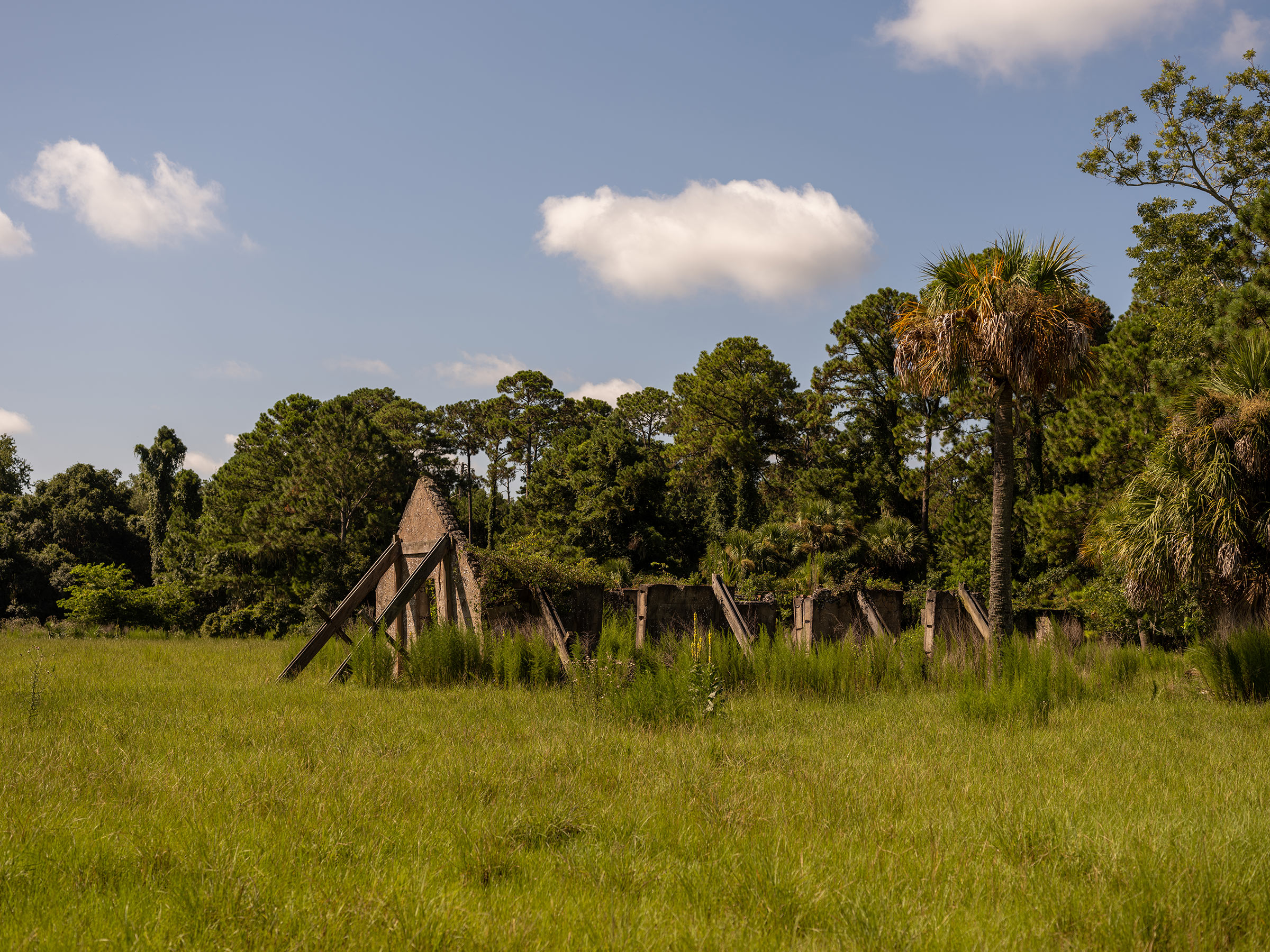
The tour begins with Hogg Hummock, the area where just about all the island’s private property sits. (A sign welcomes visitors to “Historic Hog Hammock Community, Established Circa 1857.” Its inaccuracy is a source of immense frustration to Hall, a hummock being a good place to build in a marshy area and a hammock a thing one sleeps in.) At the post office, letters dated 1917, naming Hall’s grandfather the island’s postmaster, hang on a wall. There’s a stop at Behavior Cemetery, which is on the National Register of Historic Places. Just as I ask Grovner what people most tend to want to see on the island, he rounds a bend on a shady dirt road and there it is: the Reynolds mansion.
In 1934, the tobacco heir R.J. Reynolds Jr. made his first purchases on Sapelo Island. He eventually came to own more than 90% of its land, purchasing much of it from a Detroit auto executive named Howard E. Coffin. But Hall also has a number of family stories of tactics Reynolds used to prompt Gullah Geechee residents to sign over the deeds to their properties. An uncle, Hall relates, says he exchanged land for an emergency boat ride to the mainland when he thought his wife was having a heart attack. (Veronica Davis Gerald, director emeritus of Coastal Carolina University’s Charles Joyner Institute for Gullah and African Diaspora Studies, wrote in a report submitted in their federal suit that Reynolds often engaged in “coercive and fraudulent land swaps.”) Reynolds’ widow later sold what he’d owned on the island to the state of Georgia. Today, the state uses much of that land—more than 9,000 acres—for scientific research and as a wildlife management area. But ask Hall about that generosity and it becomes just one of many ways that powerful white people are still setting the terms of life on the island.
Read more: Why Suburban American Homeowners Were Accused of Being a ‘Profit-Making Cartel’ in the 1970s
“There’s always a threat” of losing Gullah Geechee land and with it the culture, says Victoria Smalls, a Gullah Geechee woman who is executive director of the National Parks Service’s Gullah Geechee Cultural Heritage Corridor Commission. The 12,000-sq.-mi. corridor was first recognized by Congress in 2006, two years after the National Trust for Historic Preservation put the area on its list of the country’s 11 Most Endangered Historic Sites.
Later—after the alligators exit the puddles and move down the road—the man in the Southern Roots T-shirt, having seen just a few hours’ worth of life on Sapelo, asks a question: “Does the county provide any services, at all, on the island?”
“No,” Grovner says plainly. “We pay the same taxes but don’t get the same services. Just about nothing at all.”
In 2007, Hall was working in real estate on Martha’s Vineyard, Massachusetts, when his father summoned him back to Sapelo Island with warnings that the Gullah Geechee community was under threat. Hall’s father, who died in 2014, wasn’t wrong. While Sapelo once had the student population to support two Rosenwald Schools, there are now just two school-age Gullah Geechee children who live on the island full time. Many residents are older people for whom a lack of public services created particular difficulties.
That call set Hall on an odyssey of research, and he moved back to the island in 2009. Then, in 2012, he read about a case out of Zanesville, Ohio. Not long before he’d moved back home, residents there had won an almost $11 million federal civil rights suit after a court found their civil rights had been violated when government entities refused to provide a predominantly Black area called Coal Run access to the public water system, even as that very same service was provided to white residents in areas that surround it. One county commissioner was reported to have had said that Coal Run would not get water until “President Bush drops spiral bombs in the holler.”
The lawyers representing the city, county, and water authority described the triumphant plaintiffs’ representation as “out-of-town lawyers who saw an opportunity for a cash settlement.”
But Hall—who tends to speak in the cool-cat monotone of a Gil Scott-Heron interlude even as he recites Georgia law verbatim—took particular note of the way one of those lawyers, Reed Colfax, seemed not to hesitate in pointing to racism as a cause of the disparity.
Already, in 2011, Hall himself had successfully pushed McIntosh County officials to put an end to selective restrictions on private-boat docking. Around the same time, he got the state to replace most of Nanny Goat Beach’s damaged boardwalk and pavilion. He’d pressured the state to install a new water tank for the island and to give two Black state employees real homes to live in on the island, like some other staff, instead of the 1970s-era trailers they had been assigned. And in 2016, he got the county’s waste-management contractor to equip the island with an electric trash compactor to alleviate the buzzard problem caused by food waste waiting to be picked up by the county. Hall knew how to send the right email, to mention the right law, to show up at the right meetings.
And this, he thought, was the kind of lawyer Sapelo Island needed. Colfax, a Black, homeschooled Californian with a Harvard undergrad and Yale Law education, responded to his cold call within a day.
That first phone call was long. It was intense. It was with Hall, so it was fact filled, says Colfax, then 38 and today still a boyish 51. In 2015, he filed a federal racial-discrimination case, brought by Hall and dozens of his relatives, against McIntosh County, the state of Georgia, and some of its agencies, including the Sapelo Island Heritage Authority, a preservation group.
Sapelo Island, the suit argued, was facing pressure from developers and officials eager to see it become a “vacation destination spot with luxury second homes and resorts.” Meanwhile, the island had no school, firehouse, medical services, or police. The county was charging island residents the same fee for trash services that they did people living on the mainland, even though Sapelo residents have to haul their own garbage and mainlanders get curbside pickup. And while the state talked the talk about the importance of preserving Gullah Geechee culture, it had dedicated few resources to doing so, the suit claimed. Hopes of a life on the land that some of their ancestors first worked as enslaved people were being crushed by absent streetlights and impractical ferry schedules.
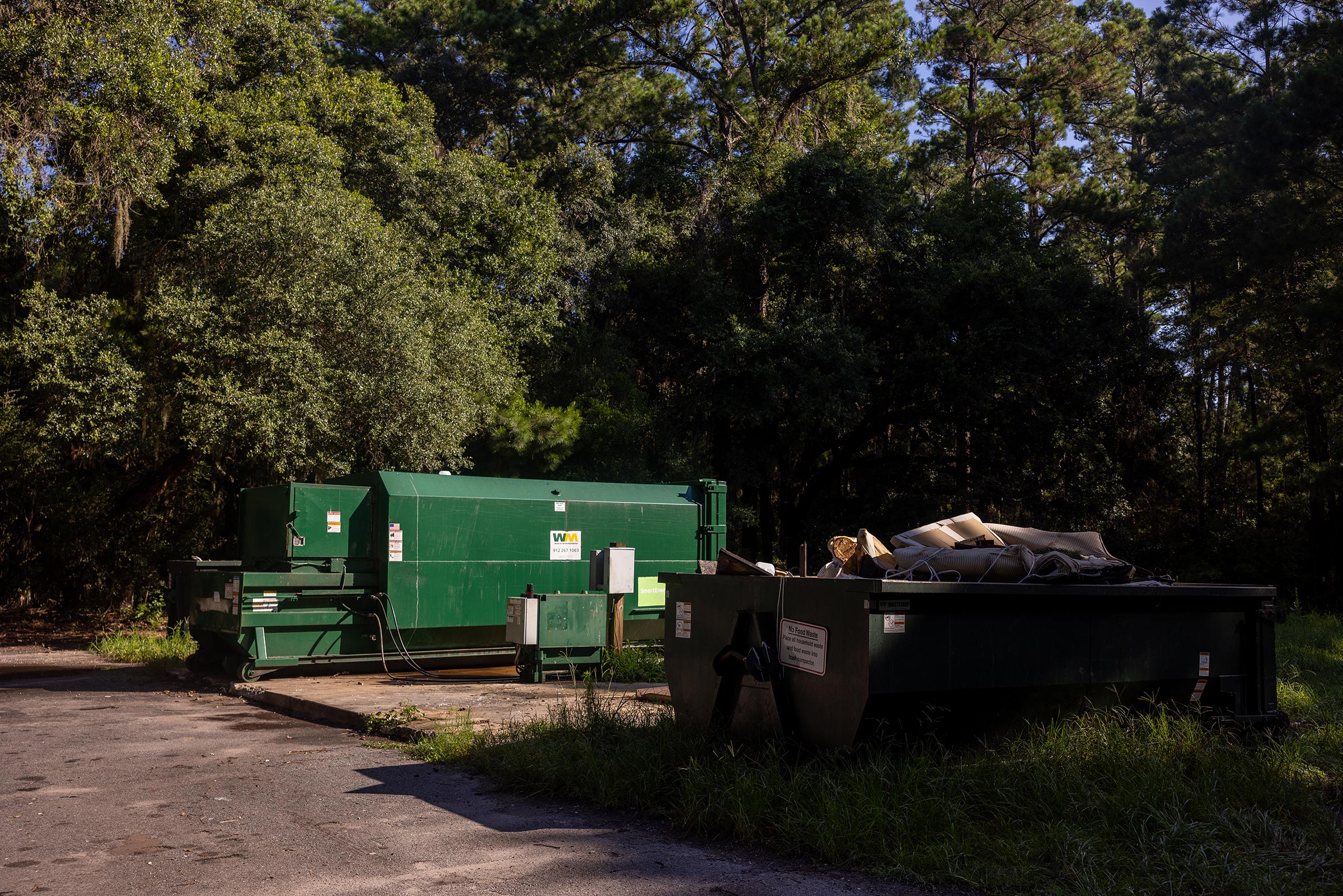
“Working jointly, the County, State, and Sapelo Island Heritage Authority are engaged in a policy of malign neglect of the Gullah Geechee on Sapelo Island,” the initial complaint read. “… These actions have the purpose and effect of driving the last intact Gullah-Geechee community from Sapelo Island and into history books.”
Read more: Nearly 6 Decades After the Civil Rights Act, Why Do Black Workers Still Have to Hustle to Get Ahead?
In late 2020, the state settled various claims in the federal case, to the tune of $19 million spent on improvements ranging from wheelchair-accessible docks to more frequent ferry service. The department of natural resources promised to consider “low-cost” options for improving water pressure in the “Hog Hammock water system,” and island residents received a collective $750,000 payment.
But other claims, evolving over the years as various judges made decisions, rolled on. In documents filed in federal court in October 2020, Colfax and his team argued that people have died as a result of a lack of emergency medical access having delayed care. Hogg Hummock has an International Organization for Standardization fire rating of “unprotected,” and Hall says that as a result of the lack of infrastructure, many people on the island struggle to pay the highest possible fire-insurance costs. The absence of trash collection also creates safety and sanitation risks, the document claims. Residents and visitors alike have to cart their own garbage, and the dumpsters into which the waste is deposited aren’t replaced by the county on a regular schedule, Hall tells me. Sometimes creatures get into trash bags and spread litter for miles.
The October 2020 document argues that it is a violation of the 14th Amendment’s Equal Protection Clause that while McIntosh County has spent millions of dollars improving water service for mainland residents, it’s done nothing of the kind on the island. Island residents can’t use their water for cooking or drinking, and many don’t feel safe using it for household tasks. After a hurricane, residents did their own cleanup, using their own tools to clear fallen trees. Overall, the plaintiffs argued, in the places where McIntosh County is spending tax dollars, residents are nearly 70% white. But in places where McIntosh County is spending virtually nothing, residents are over 90% Black. (The state disputes the 90% figure.) Meanwhile, the suit argues, selective zoning enforcement has left an overwhelmingly white group of newcomers free to build large Sapelo getaway homes, jacking up property taxes.
All of this is happening in a county with what the October 2020 document describes as almost ambient racism. Schools remained under a court-ordered desegregation plan until 2006. In the 1970s, when the county was equally divided between Black and white residents, grand juries were 90% white. And Reynolds is not the only white man accused of strong-arming Black people out of property on the island. In her book Praying for Sheetrock, Melissa Fay Greene writes that Tom Poppell, McIntosh County sheriff from 1948 to 1979, had what the October 2020 document calls an “understanding” with Black residents that, as Greene wrote, “an arrest warrant or an indictment might be mislaid permanently … in exchange for their land.”
State officials did not respond to a request for comment. Richard K. Strickland, a Georgia lawyer who represented McIntosh County in the federal suit, rejects the idea that Sapelo’s Gullah Geechee residents were not receiving comparable services to others, pointing out that the lack of streetlights on the island isn’t unusual in the county and that Sapelo has an on-island dump while the owners of homes—mostly vacation homes—on other islands must haul trash to a dock. McIntosh is not a rich county, Strickland says: about 25% of its land is not taxable. In responses to the initial lawsuit filed with the federal court, the county argued that most of the people involved in the suit don’t even live full time on the island. Also among the county’s claims: That the difference in services received has to do with whether one lives on the mainland or on the island—in other words, that there is no gap for white and Black residents who live in the same place—and thus there is no Equal Protection Clause violation. That Sapelo’s Gullah Geechee have no proof that white homeowners are being given preferential treatment. That anyway, property appraisals for tax purposes are conducted by an independent body, not the county.
Only this year did the federal case against McIntosh County get a trial date. It was set to be heard by a jury in Savannah, a coastal city whose residents include many Gullah Geechee and other African Americans. Citing the high cost of putting up its lawyers in Savannah, the county pushed instead to move the trial to Waycross, Ga., a landlocked town about 2½ hours west of Sapelo, a rural place in a majority-white county that in 2020 voted nearly 70% for Donald Trump. (Savannah’s diverse county went for Joe Biden.) The court refused. Then, on July 13, the county contacted Colfax to talk about settling.
“The county is just pleased that we were able to reach an agreement,” says Strickland. “Nobody wants to be disagreeable with their own citizens.”
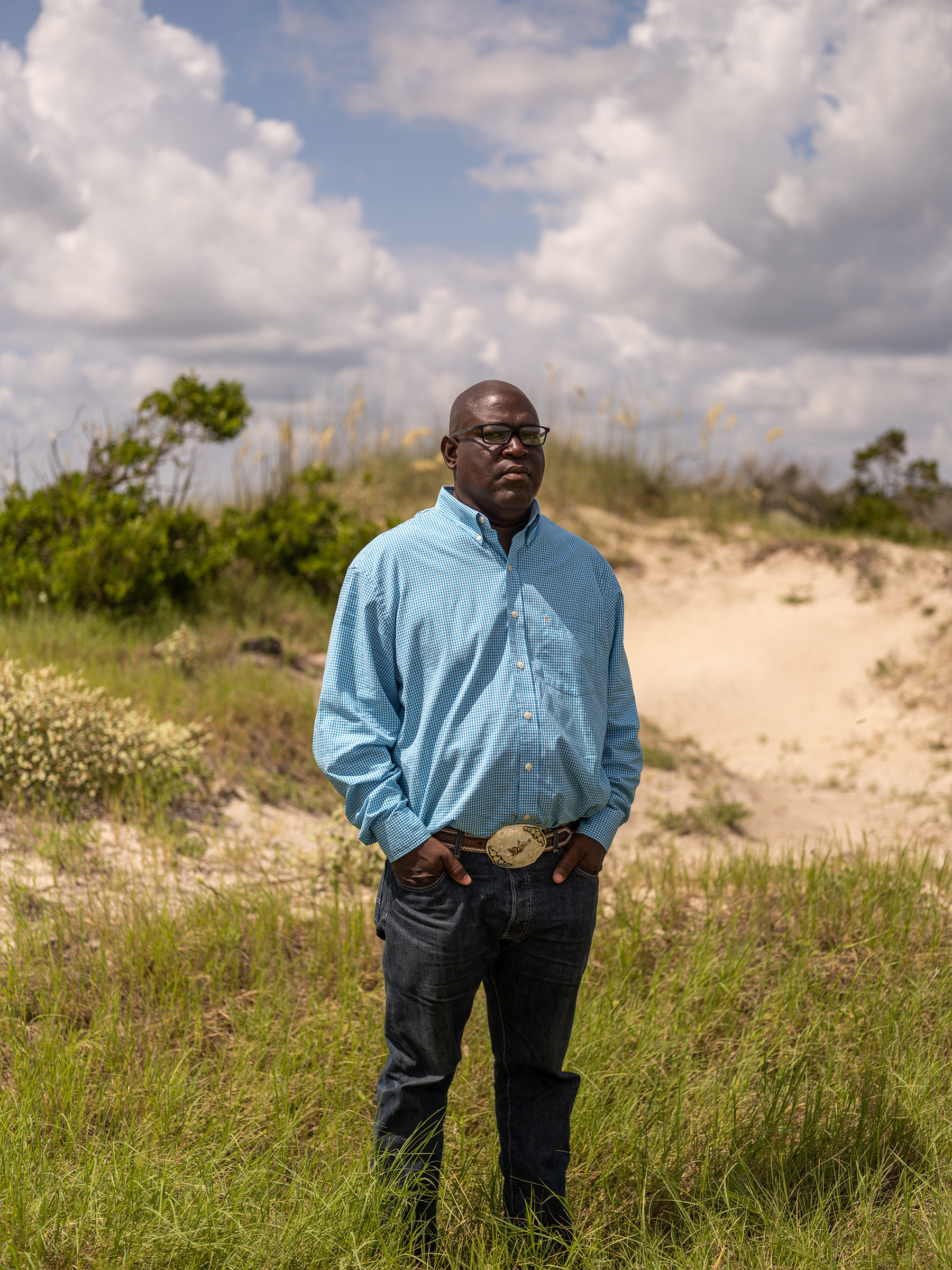
There are plenty of places in the U.S. with no public transit or curbside garbage pickup. But a disproportionate share of such situations can be found in Black, Latino, or Native American communities.
This is not, says demographer Allan Parnell, “a Southern thing; it’s a Black and brown thing.” Vice president of Cedar Grove Institute for Sustainable Communities and a former Duke University professor of what he says were “boring things,” he now devotes himself to providing expert testimony in civil rights cases. As part of a team with his wife, former journalist Ann Moss Joyner, and mapping expert Ben Marsh, he has worked on at least 40 such cases, three of them related to access to public services, since 2003. In that time, he says, he’s seen a pattern in communities with large nonwhite populations: “[T]he sewer lines stop and the streetlights stop and the storm drains stop.”
Judges, juries, and journalists are just as likely as anyone else, Parnell says, to have knee-jerk denial reactions to allegations of bigotry. But, taken as a whole, the picture is hard to miss.
At the close of the 19th century, W.E.B. Du Bois surveyed thousands of Black Philadelphia residents. Few had access to indoor plumbing, and only about 14% had access to bathrooms. Even private outhouses were uncommon. The impact was clear. In the areas of the city with the worst sanitation, the death rate was highest. In Savannah, another researcher found that a trio of yellow fever outbreaks had prompted the city to build a public water and sewer system in 1898. Two years later, while 88% of white homes had access to it, just 58% of Black households did, according to a 2019 NAACP Legal Defense Fund (LDF) report.
Today, take Cleveland. There, the LDF is challenging the city’s policy of placing liens on homes with overdue water bills, which can lead to foreclosure. Or take Baltimore. A similar policy exists there too, according to the LDF report; until 2019, the Maryland city placed liens on homes for unpaid bills as low as $350. Cleveland’s threshold was even lower. In the county that includes Cleveland, the study says, most water liens are placed on properties in predominantly Black neighborhoods. City officials have argued it’s efficient to disconnect many homes with overdue water bills in one area at a time, even if individual homes in other areas are much deeper in arrears. That means, the report explains, that if you live in a predominantly Black area, you are more likely to lose your water service.
Read more: America’s Clean Water Crisis Goes Far Beyond Flint. There’s No Relief in Sight
Take Modesto, Calif. A 1948 study suggested that the city and surrounding Stanislaus County begin investing in infrastructure in densely populated areas nearby, which might one day become part of Modesto. As those areas became majority-Latino communities and as Modesto grew, public officials opted to make improvements in and then annex other, whiter areas instead. By 2004, when a group of four mostly Latino communities filed suit, maps showed their neighborhoods were contained inside the area where state law says Modesto is expected to provide services. Public officials’ decisions left them as excluded islands in the city. A type of sewer main that cannot be readily tapped to add new lines had, in most cases, been run around the edges of the so-called islands; says Nick Jensen, 27, a lawyer with the Community Equity Initiative of California Rural Legal Assistance Inc., one of the organizations that filed suit on behalf of the communities. By 2010, those organizations argued, Latinos in that area were about three times as likely as white residents to live with limited or no public services—and yet, for some, to endure the “horrendous smell” from a nearby sewage plant that served others. The Modesto case, on which Parnell and his team consulted, settled in 2011. Today, more than a decade after the settlement, one of the four communities behind the suit has been added to the city’s water and sewer system. Various infrastructure extensions to the other three are still in progress.
That kind of timeline is not unusual, says Mike Daniel, 75, a Dallas-based lawyer—no relation to Pete Daniel—who in 2015 won a fair-housing case before the Supreme Court, affirming that the legal standard for discrimination in such matters is found in a policy’s effect, not its intent. (Colfax’s Sapelo case, as an Equal Protection matter, carried the more challenging burden of showing discriminatory intent.) In 1980, Daniel brought a suit on behalf of public-housing residents in 36 East Texas counties where everything from the number of working streetlights to the frequency of police patrols was different in the streets closest to those housing projects—areas with larger Black and Latino populations—from that in other parts of these same cities. The cities evened things out while under an active court order. When it ended in 2003, they went right back to doing things the old way, Daniel says.
“Nobody called them on it,” says Daniel, who is considered one of the nation’s leading attorneys in this area of the law. That’s part of why it’s so “massive and impressive” to see Colfax and his team do just that. “One of the things about segregation is that it keeps us white folks from having to admit how bad things are. You don’t even have to see it, much less understand what it means and what it’s like to live with it.”
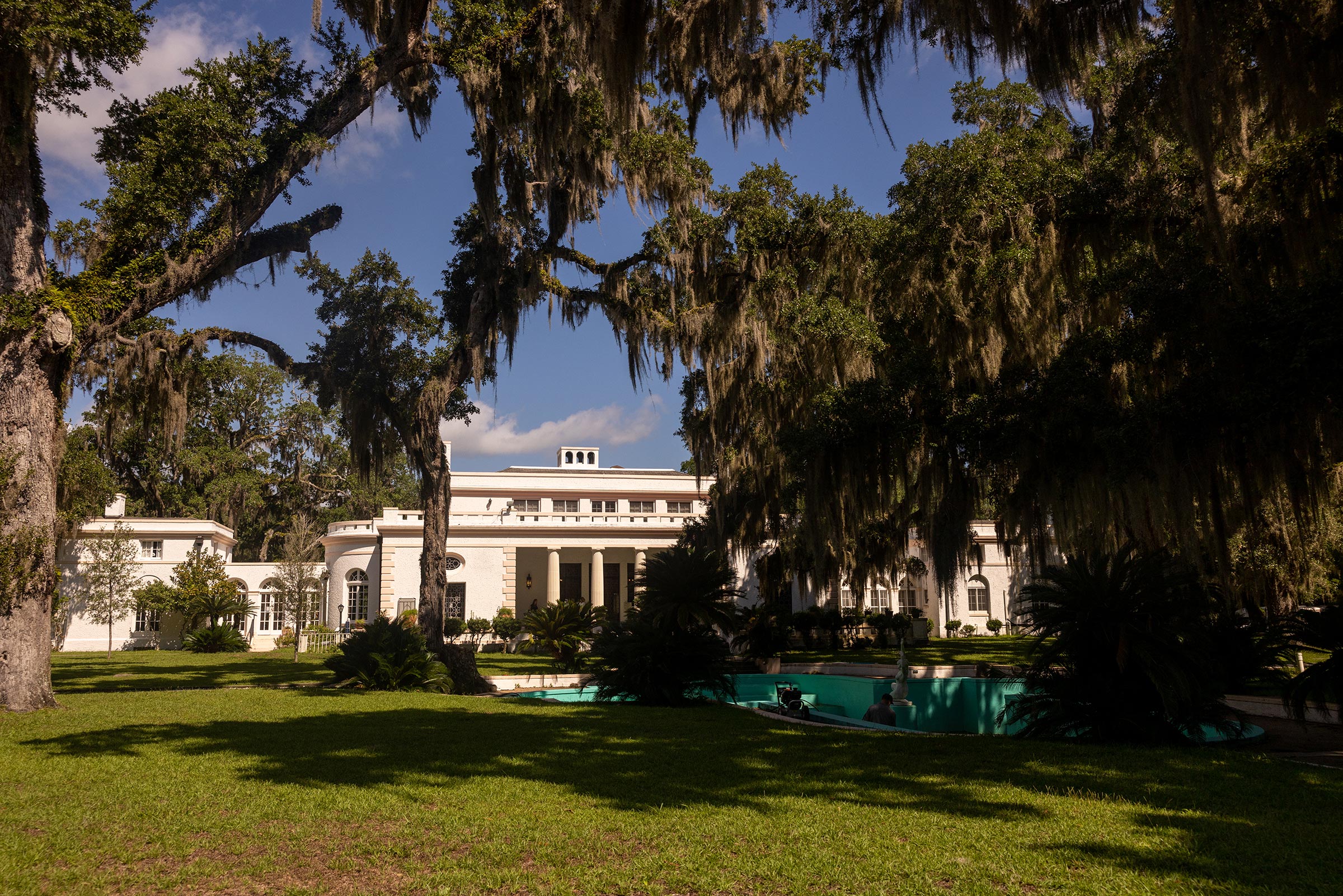
In the early 2000s, I was working at a Texas newspaper when my editor sent me to a colonia about 13 miles outside the city where I’d grown up. The word simply means community in Spanish, but as an English-language noun and a public matter colonia signals a lack of access to potable water, sewer systems, electricity, paved roads, or safe housing. There are thousands in the U.S. near the southern border. Until I got that assignment, I didn’t know that one existed right outside the city. In this all-Latino community, water supply was so poor that only working people showered in the morning. Other adults had claim to the midday hours, and children bathed at night. If the people deviated from that plan, their taps could run dry. The county government was debating whether to even try to fix the problem. I was a lot younger then and couldn’t believe this was happening in the U.S.
It is—but not to everyone equally. If attending to the racial distribution of access to public services doesn’t at some point become fundamental to our understanding of life in U.S. cities, the very idea of America as a place with high living standards becomes a fiction. Those paying attention might argue that it already is. No one has to convince Hall that the problems he’s contending with stem from ideas about race and who deserves what.
When he calls me to tell me about the settlement, I can’t tell if he’s vexed or happy. He always sounds like a man who has a long to-do list. The deal will require the county to pay the plaintiffs $2 million. (Hall and his relatives voted among themselves in a late July meeting to pay Colfax and his team half of the $2 million payout—a fraction of the legal team’s costs on the long case. “This was not a money-making case,” says Colfax. “This was a case to further our mission.) Among other promises, the county will create written emergency plans, and train and equip some residents to perform medical and firefighting tasks. It will also attend to roads and ditches on the island quarterly, and make sure a working fire truck no more than “5 years older than the average age of the mainland fleet” is stationed on Sapelo Island. Landfill fees for all island property owners will be reduced 30%, and the county’s trash contractor will check the island compactor’s functionality and will empty it at least once per month. McIntosh will also implement another three-year freeze on all property taxes on the island.
This result, Hall tells me, is going to increase the number of people who survive medical crises, reduce the risk that houses will burn to embers, and, perhaps just as importantly, free up the mental energy to focus on things that may help Sapelo’s Gullah Geechee people feel once again that this is a place to which they can come home.
But in late July, when the settlement is almost final, Hall also tells me he still intends to seek a long-term solution for the tax problem, and to work toward the return of lands that left Gullah Geechee hands through what he considers nonstandard means. In the days since the settlement news was announced in the local press, he says, he’s been flooded with emails from people elsewhere who are looking for information about how he and his relatives did what they have or want to help. In other words, the case is done, but he’s not. He’s up early taking in the sun. He’s back at his computer. When it comes to the services he expects from America, he wants more than just the basics necessary to survive.
—With reporting by Solcyre Burga, Leslie Dickstein, Anisha Kohli, and Simmone Shah
More Must-Reads From TIME
- Dua Lipa Manifested All of This
- Exclusive: Google Workers Revolt Over $1.2 Billion Contract With Israel
- Stop Looking for Your Forever Home
- The Sympathizer Counters 50 Years of Hollywood Vietnam War Narratives
- The Bliss of Seeing the Eclipse From Cleveland
- Hormonal Birth Control Doesn’t Deserve Its Bad Reputation
- The Best TV Shows to Watch on Peacock
- Want Weekly Recs on What to Watch, Read, and More? Sign Up for Worth Your Time
Contact us at letters@time.com